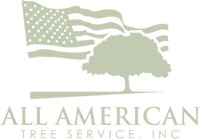Importance of Tree Trimming and Pruning
Tree trimming and pruning are essential for maintaining the health and longevity of trees. Trimming involves removing branches to shape the tree or improve aesthetics, while pruning focuses on removing dead, diseased, or damaged branches to improve the tree's structure and promote healthy growth.
Proper pruning techniques are crucial for preventing the spread of disease and ensuring the tree can heal properly.
Get a free estimate!Pruning for safety involves removing branches at risk of breaking and causing damage or injury. This includes branches that obstruct visibility on streets or driveways and those that could potentially interfere with service wires.
Pruning for improved health entails removing dead, diseased, damaged, or infested areas. Promptly removing these branches prevents the spread of disease and improves the overall health of your tree. Thinning the canopy to increase airflow can reduce insect problems and lessen the risk of storm damage. It also allows sunlight to penetrate, improving the condition of your lawn or landscape underneath.
Trimming for beautification can enhance flower production and structure, promote strong branch development, and create a more balanced tree shape. Shaping can be particularly effective in creating a uniform, groomed appearance of the tree and its surrounding landscape.
Control size trimming helps manage the tree’s size, preventing it from becoming too large or interfering with structures or landscaping. Providing building clearance can reduce the amount of debris that clogs gutters, allows access to unwanted critters, and prevents damage to your home or structure.
Trimming vs. Pruning Trees
-
Trimming
Primarily focused on shaping and aesthetics. It can involve reducing the size of the tree, creating clearance, or removing branches that are rubbing together.
-
Pruning
A more specialized process that involves removing specific branches to improve the tree's health, structure, and overall vigor. It often includes removing dead, diseased, or damaged branches, as well as branches that are interfering with the tree's growth or development.
Many species benefit from pruning in late winter or early spring, specifically oak and elm trees. This timing allows the cuts to heal before the growing season begins, reducing the likelihood of insect and disease spread.
All American Tree Service, Inc.™ is licensed and fully insured for your protection and ours.
Contact us